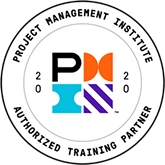Five-Step Model to Making Strategic Decisions
Learn the 5 step method to help you successfully navigate the decision making process.
Strategic decision making is a critical skill for effective leadership. The outcome of a leader‘s choices significantly impacts employees, customers, the market, and ultimately the success of the company. Developing such a skill requires a combination of knowledge, experience and intuition. It also requires a process to help define the problem and select the right course of action. Here is a method to help you successfully navigate the decision making process.
Making Strategic Decisions — 5 Steps for Success
 1. Define the Problem — Consider these questions:
1. Define the Problem — Consider these questions:
- What is the problem? Can it be solved? Is this the real problem or a symptom of a larger one?
- Does it need immediate attention or can it wait? Is it likely to go away by itself? Can I risk ignoring it?
- What is my objective? What‘s to be accomplished by the decision?
2. Gather Information — Seek information on how and why the problem occurred:
- Stakeholders: Talk to individuals or groups affected by the problem
- Facts and data: research, benchmarking studies, interviews with credible sources, observed events
- Constraints: Lack of funding, resources, cultural barriers
- Ask: What am I not seeing? What have I missed?
3. Develop and Evaluate Options — Generate a wide range of options:
- Choose options that show promise, need more information, can be combined or eliminated, or will be challenged.
- Weigh advantages/disadvantages of each. Consider cost to the business, potential loss of morale/teamwork, time to implement the change, whether it meets standards, and how practical the solution is.
- Predict the consequences of each option. (“If/Then” or “What if?”)
- Ask: What is the worst solution?
4. Choose the Best Action — Select the option that best meets the decision objective:
- Consider factual data, your intuition, and your emotional intelligence when deciding a course of action.
- Accept that the solution may be less than perfect.
- Consider the middle ground. Compromising on competing solutions may yield the best decision.
5. Implement and Monitor the Decision — Develop a plan to implement and monitor progress on the decision:
- Step-by-step process or actions for solving the problem
- Communications strategy for notifying stakeholders
- Resource identification/allocation
- Timeline for implementation
- Measurements/benchmarks to gauge progress
In business (and in life), decisions can fail because the issue has not been clearly defined and alternatives have not been carefully considered. Rather than delay the decision or make one based on faulty information, this model ensures that the right problem gets solved at the right time and in the right way.



